Many bowhunters and competitive archers seek to customize their bows to reflect their individuality since the compound bow is not just a piece of equipment, but an extension of their skill and personality.
Painting a compound bow can provide this personal touch, transforming a standard piece into a masterpiece. Nevertheless, it’s not just about aesthetics; a well-painted bow protects itself from the elements and enhances its functionality. It takes patience and attention to detail to paint a compound bow.
This complete guide will take you step-by-step through the process of applying a professional paint job to your compound bow. From preparation to final testing, every detail is crucial to ensuring a beautiful bow that performs well.
Why Should You Painting A Compound Bow?
Compound bows should be painted for a variety of reasons before you unscrew and tape over them.
Customization
Compound bows have become increasingly popular as a way to express one’s personality. A personalized finish not only enhances your compound bow’s look, it can also make a great conversation piece.
Provides coating protection
Paint prolongs the life of the bow by protecting it from rust, scratches, and general wear and tear.
The camouflage effect
It is crucial to painting a compound bow properly in order to conceal it out of sight when hunting in the wilderness. A poorly blended bow can be a dead giveaway in the wilderness, so camouflaging it properly is crucial.
Paint Preparation: Setting the Foundation
In order to achieve a smooth, professional finish, preparation is crucial. Neglecting this phase will result in a paint job that looks unprofessional and chips or flakes.
Bow cleaning
To prevent paint from adhering to the bow, clean the bow thoroughly using a solvent that won’t harm its material. Grit and grease that remain on the surface will interfere with the paint’s adhesion.
Removing the accessories
You will need to remove all the components you can from the bow, including sights, stabilizers, arrow rests, etc. Leave only the essential components.
Priming and sanding
Next, prepare the bow’s surface for painting. Sand it lightly with fine grit sandpaper, then use a primer to prevent rust. The primer acts as a bond between the paint and the bow. You must use a compound bow primer, since some regular primers may be too thick and affect bow performance.
Techniques for painting
Depending on the tools and techniques you choose, as well as your desired outcome, the painting process can be quite varied.
Hand painting vs. spray painting
Spray painting produces a smooth, even finish, and if done correctly, will render a professional result. Hand painting, on the other hand, can produce intricate patterns and designs.
Selection of colors and patterns
Color and pattern selection are crucial to painting. For concealment, natural hues and camouflage patterns are best. For personalization, mix and match colors to create your own look.
The Waiting Game: Drying and Curing
When the paint has been applied, the next step is to allow it to dry and cure properly. Rushing through this phase will ruin the finish and make the paint brittle in the end.
Providing proper ventilation
Your freshly painted bow should be placed in a well-ventilated area to prevent dust and debris from ruining it. Ventilation is important for both your health and the cure of the paint. Lack of air leads to longer drying times and a softer finish.
Time is needed for drying.
It can take a few hours to a couple of days for the paint to dry depending on the type of paint, weather conditions, and coat thickness.
Long-lasting Finishing Process
After the paint has dried, allow it to cure for the recommended period of time. Curing hardens the paint, reducing scratching and abrasions.
Putting it all back together: Reassembly and testing
After painting and curing your bow, you will need to reassemble it and ensure everything works properly.
Accessory reattachment
Ensure that all accessories are firmly reattached and clean and maintained at the same time.
Functionality testing.
As soon as you have finished painting a compound bow, check to see if the bow functions as it used to. String the bow with the cams rotating smoothly. Ensure there are no parts that feel out of place when the bow is being used.
Touch-ups
Make sure the polish you use on the bow is safe for its material. Polish the bow to shine and seal the finished look.
Conclusion: Paint a Compound Bow – a Reflection of You
Painting a compound bow isn’t just a DIY project; it’s an opportunity to hone your craft, protect your bow, and show a bit of your personality. It is possible to ensure a successful painting a compound bow process by following the steps laid out in this guide. This will endure wilderness trials and time.
When you rock a bow that is truly yours, what’s more fulfilling than the sense of accomplishment you get from it? Keeping your painted bow looking amazing and performing at its best requires proper care and maintenance, just like any piece of equipment. Now, show off your artistic prowess, both on the range and in the woods.
Recent Posts
- A Complete Guide To Essential Parts Of A Crossbow
- A Comprehensive Guide To Pick Best Budget Crossbows
- A Comprehensive Samick Sage Review For Beginner Archers
- An Ultimate Bow Size Chart Guide For Archers
- Avoiding Pitfalls – Your Ultimate Guide To Perfect Bow Brace Height
- Axe 405 Crossbow Problems: Overcoming Common Problems


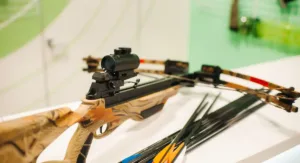
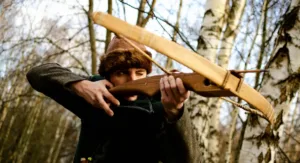
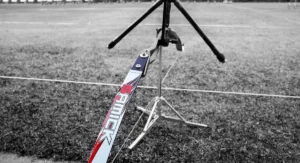
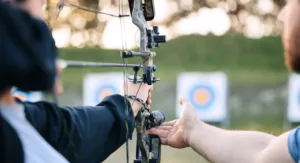
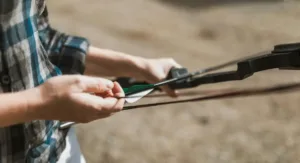
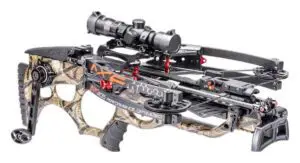
1 thought on “Best Way To Painting A Compound Bow”
Comments are closed.